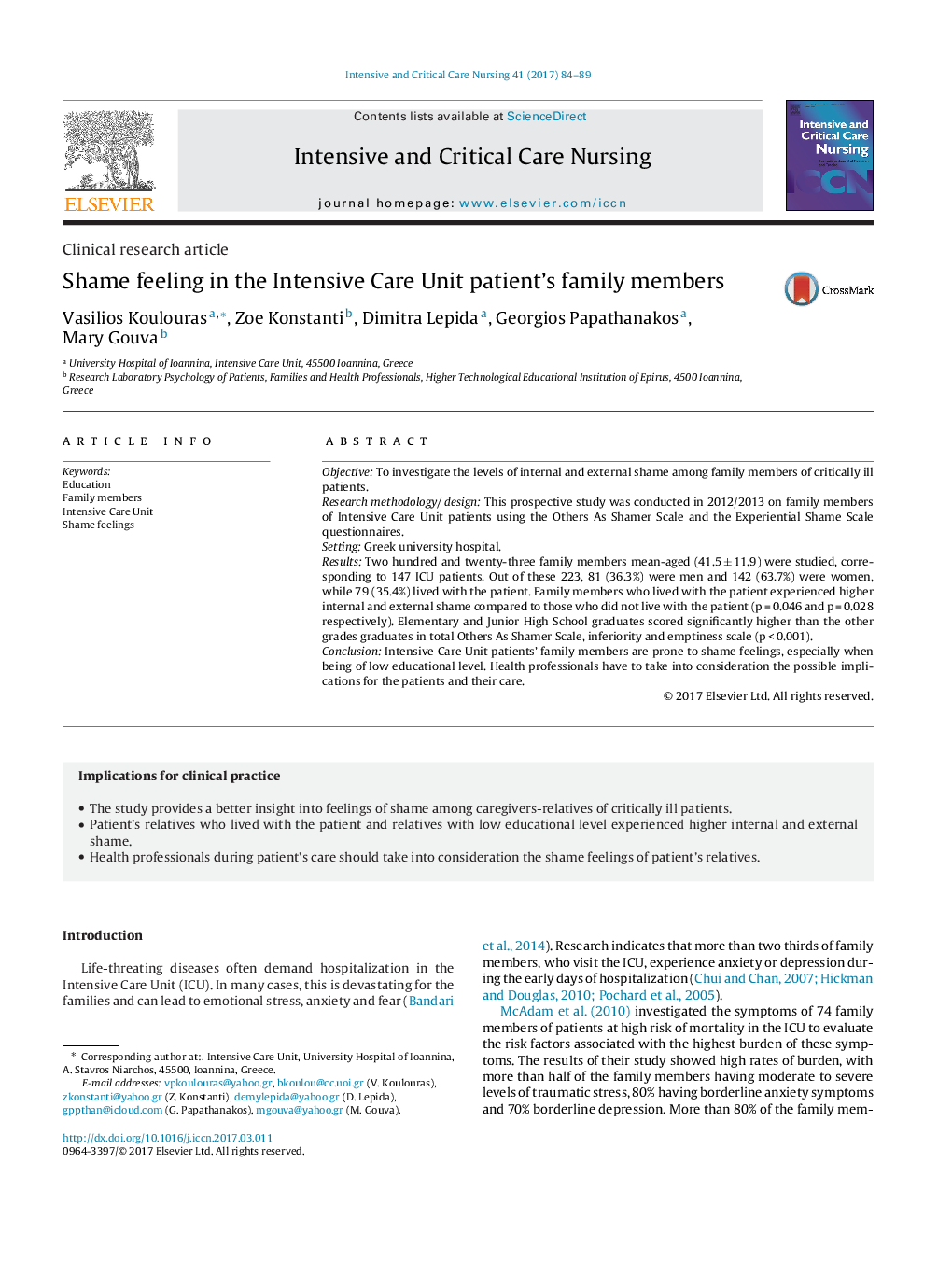| کد مقاله | کد نشریه | سال انتشار | مقاله انگلیسی | نسخه تمام متن |
|---|---|---|---|---|
| 5568257 | 1563941 | 2017 | 6 صفحه PDF | دانلود رایگان |
نتیجه گیری
کلید واژه ها
مقدمه
روش ها
مشخصات ICU های شرکت کننده در مطالعه
مشخصات بیماران و اعضای خانواده ها
سنجش
مقیاس تجربه احساس شرمساری
مقایس دیگران به عنوان شرمسار
جدول 1. مشخصات اجتماعی-دموگرافیک اعضای خانواده بیماران
روش کار
تحلیل آماری
نتایج
جدول 2.تحلیل یک طرفه واریانس (ANOVA) امتیازات تست OAS و ESS بر اساس سطح تحصیلات اعضای خانواده بیماران ICU و تست های تعقیبی
بحث
محدودیت ها
نتیجه گیری
جدول 3. نمایش مقایسه ای امتیازات OAS میان اعضا خانواده بیماران بستری در ICU و جمعیت عمومی همتایشان
جدول 4. نمایش مقایسه ای امتیازات ESS میان اعضای خانواده بیماران بستری در ICU و جمعیت عمومی همتایشان
ObjectiveTo investigate the levels of internal and external shame among family members of critically ill patients.Research methodology/ designThis prospective study was conducted in 2012/2013 on family members of Intensive Care Unit patients using the Others As Shamer Scale and the Experiential Shame Scale questionnaires.SettingGreek university hospital.ResultsTwo hundred and twenty-three family members mean-aged (41.5 ± 11.9) were studied, corresponding to 147 ICU patients. Out of these 223, 81 (36.3%) were men and 142 (63.7%) were women, while 79 (35.4%) lived with the patient. Family members who lived with the patient experienced higher internal and external shame compared to those who did not live with the patient (p = 0.046 and p = 0.028 respectively). Elementary and Junior High School graduates scored significantly higher than the other grades graduates in total Others As Shamer Scale, inferiority and emptiness scale (p < 0.001).ConclusionIntensive Care Unit patients' family members are prone to shame feelings, especially when being of low educational level. Health professionals have to take into consideration the possible implications for the patients and their care.
Journal: Intensive and Critical Care Nursing - Volume 41, August 2017, Pages 84-89
